PAINTING: The first hour, Journeys with John, will look at landscapes either by
John Constable or from other periods and somehow related to his work. The first such comparison is shown below.
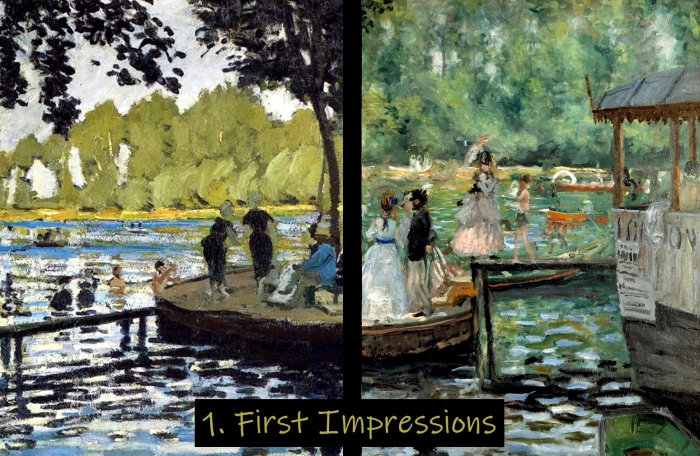


Some questions: Assume that the artist's role in painting a landscape consists of three parts: selecting the subject, editing what he sees, and possibly adding elements that are not a permanent part of the view. How does Constable handle each of these aspects? What is added or changed in the final version as compared to the large sketch? How well does the final version preserve the vision captured in the small sketch?
POETRY: The second hour, Stops Along the Way, will continue the theme with six short poems of place, from 1845 to 1999. Here is the beginning of the most recent, Joseph Stroud's Directions. You can read the rest of it and all the other five here.
Take a plane to London.
From King's Cross take the direct train to York.
Rent a car and drive across the vale to Ripon,
then into the dales toward the valley of the Nidd,
a narrow road with high stone walls on each side,
and soon you'll be on the moors. There's a pub,
The Drovers, where it's warm inside, a tiny room,
you can stand at the counter and drink a pint of Old Peculier.
PEOPLE: Here are brief bios of the artists and poets we shall consider in the class, listed in order of birth. You can access all biographies via the BIOS link on the syllabus page.
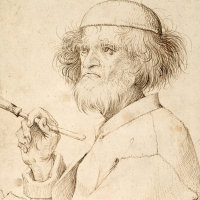 |
Pieter Bruegel the Elder, 152569. Netherlandish painter. Considered the greatest Northern European painter of his time, he produced mainly moralistic works characterized by their high viewpoint and close observation of ordinary people. Also spelled "Brueghel" and "Brughel." |
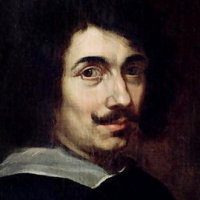 |
Claude Gell้e (Lorain), 160482. French landscape painter, largely active in Rome. His Arcadian and harbor scenes, principles of composition, and use of light earned him the reputation as the greatest of all landscape painters, and his influence especially in France, Britain, and America lasted until the mid-19th century, not only in art but also landscape gardening. |
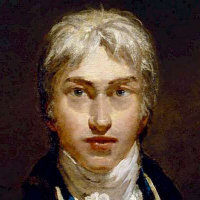 |
Joseph Mallord William Turner, 17751851. English painter. Rivaled only by Constable, Turner was the dominant British landscape painter of the first half of the 19th century, he started his career with topographical views intended for engraving, and ended with works whose subjects were dissolved in veils of paint and light. |
 |
John Constable, 17761837. English painter. Even more than his contemporary Turner, Constable was the leading English landscape painter of the 19th century. Living in East Anglia, he was influenced by the Dutch landscapists painting very similar country. He made numerous outdoor sketches of clouds and trees, with free and brilliant handling of paint, but he reverted to a more sober style in his paintings for exhibition. |
 |
George Robert Lewis, 17821871. English painter. Lewis worked in a variety of genres, but he is best known for his naturalistic lanscapes and closely-observed studies of country people. |
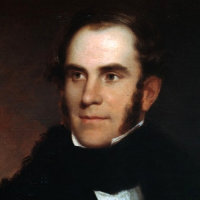 |
Thomas Cole, 180148. American painter, born in England. A founder of the Hudson River School. Towards the end of his career, he turned to grand historical and allegorical themes, of which The Course of Empire was one. |
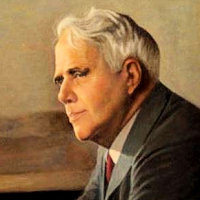 |
Robert Frost, 18741963. American poet. Finding little success in America, Frost moved with his family to England in 1912, where his quality was recognized by then-critic (and later poet) Edward Thomas. Frost returned to America in 1914, and built a reputation as the bard of rural New England and latterly America's best-known poet. |
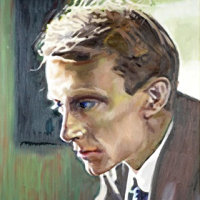 |
Edward Thomas, 18781917. English poet. At the time he met Robert Frost in 1912, Thomas was known primarily as a critic, and as the author of numerous books about the English countryside. Frost encouraged him to kindle his prose into verse, resulting in a small but intense lyrical output before he was killed in the First World War. |
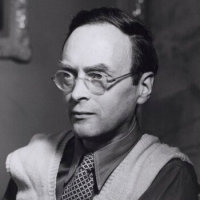 |
Ivon Hitchens, 18931979. English painter. Working on the borderline between representation and abstraction, he developed a characteristic wide-canvas format and achieved effects of considerable range. |
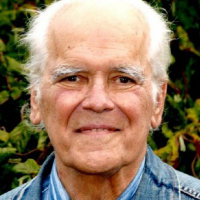 |
David Wagoner, 19262021. American poet. Born in Ohio, Wagoner moved to Washington State in 1954, at the urging of his mentor Theodore Roethke. This unlocked a close affinity with the natural environment, to the point where he was generally regarded as the national poet of the Pacific Northwest. Wagoner was Chancellor of the Academy of American Poets from 1978 to 1999. |
 |
Helen Frankenthaler, 19282011. American painter. A second-generation Abstrace Expresionist, she was the first to develop the technique of pouring thin paint onto unprimed canvas, greatly influencing several of her better-known contemporaries. |
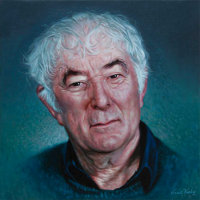 |
Seamus Heaney, 19392013. Irish poet and translator. Nobel Prizewinner Heaney was born in Northern Ireland, making him technically a British citizen. But he has preferred to identify himself with the Republic of Ireland, portraying her scenery and commenting on her culture and politics. In later years, he taught at Harvard. |
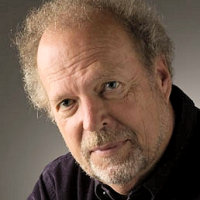 |
Joseph Stroud, 1943 . American poet. Born, educated, and living in California his entire life, Stroud is the author of several volumes of poetry and has won many prizes. |
 |
Jane Kenyon, 194795. American poet. Kenyon studied at the University of Michigan in her home town of Ann Arbor. In 1972, she married her teacher, poet Donald Hall, and moved with him to New Hampshire. At the time of her untimely death from leukemia, she was Poet Laureate of New Hampshire. |
ART: The paintings discussed (or intended to be discussed) in the first hour of class are below. For materials relevant to the second hour, click here.
COMPARISON 1



Some questions: Assume that the artist's role in painting a landscape consists of three parts: selecting the subject, editing what he sees, and possibly adding elements that are not a permanent part of the view. How does Constable handle each of these aspects? What is added or changed in the final version as compared to the large sketch? How well does the final version preserve the vision captured in the small sketch?
Some facts: Dedham Mill in Suffolk was one of several that Constable's father owned. Virtually every year, Constable would exhibit a 6-foot wide picture such as the final version here, preceding these by any number of smaller studies, and generally a full-sized preliminary version that would show much freer handling of paint than would be accepted for exhibition.

Views of Buttermere by Turner (top and right) and Constable (bottom left)
Some questions: Judging by the watercolors, what qualities of the scene seem of greatest interest to each artist: foreground, middleground, or background, land forms or atmosphere? Which are you more likely to accept as a realistic account of the place? Does the addition of Turner's oil painting support your answers to the preceding questions?
Some facts: Although the mountains in the Lake District (almost all under 3,000 feet) are not high, they offered an access to wildness that could be enjoyed at no more than a day's walk from comfortable accommodation. Partly owing to the poetry of Wordsworth, who lived in the area, they became a popular destination for painters, other poets, and energetic tourists from about 1800 on.
COMPARISON 2



Some questions: What is the role of the sky in each picture? And the sea? Which picture has the more detail, and what kind is it? What is going on in each picture? How would you describe the palette of each? Which artist makes you most conscious of the action of painting? Which picture seems most unified? Does either of them make you feel a part of the scene rather than a spectator to it?
Some facts: As a traveler, Turner knew at first hand the potential violence of the sea, and made his name with a number of powerful seascapes in the first decade of the century. Most of Constable's paintings have inland settings, but he painted a number of pictures of Weymouth in Dorset while on a six-week honeymoon in 1815.

Constable: Wheatfield (1815, Minneapolis)
COMPARISON 3



Some questions: Both pictures (Lewis and Bruegel) are harvest scenes, but is the action the same in each? What is the relationship between people and landscape? Given that the predominant color is going to be the gold of ripe wheat, how has each artist incorporated it into a chord? And what is the extent and nature of each artist's world, whether literally or in the imagination?
Some facts: Several of Lewis's sketchbooks have been preserved, showing numerous sketches of country people at work; clearly, this was something that fascinated him. Bruegel was also interested in depicting country people, but his Harvesters is unusual in that they are relatively small in size. The painting represents high summer in a series of six paintings of the Seasons he made to adorn a patron's dining room.

Claude: Hagar and the Angel (1646) with Constable: Dedham Vale (1802)
Some questions: Foreground, middleground, background, sky: what elements of Claude's composition has Constable most clearly retained? What kind of things are omitted? What aspects of Constable's picture are not in the Claude at all? What is the effect of not showing any figures? And do you think (though this must be subjective) that Constable chose the view because his eye was already in tune with Claude, or did he alter the view to become more like Claude in composition?
Some facts: Constable's early patron Sir George Beaumont bought Claude's Hagar and the Angel while on a European grand tour, and showed it to the young painter, who recorded how profoundly it changed his way of looking at things.
COMPARISON 4



Some questions: The similarity between the composition of these two paintings should be obvious, but what elements of the Claude has Cole omitted? What has he added? Which painting seems more a record of a real place? Or to what extent is each the representation of an idea and, if so, what do you think it is? Other than the actual facts of the landscape, what makes the Cole specifically American? What is the significance of the marks cut into the woodland on the small hill in the center background of the Cole?
Some facts: Claude spent most of his working life in the Campagna, or countryside around Rome, which he idealized to produce a timeless Arcadian landscape; the pastoral elements in this picture are similarly a reflection of classical literature. The full title of Cole's Oxbow is View from Mount Holyoke, Northampton, Massachusetts, after a Thunderstorm. It has been interpreted as depicting the contrast between wilderness and civilization. Read as Hebrew letters, the mark on the background gives the name of Noah.
COMPARISON 5



Some questions: Which painting has the wider palette? What is the effect of the extra colors in the picture that has more? Is there an implication of depth in either picture? What does Hitchens gain by not painting his scene more realistically? If you take it that the Frankenthaler is not a representation of an actual place, is there anything about her shapes that makes the composition feel natural rather than artificial?
Some facts: Both these artists began in a representational style, handled in terms of strong colors freely applied. While Hitchens moved towards abstraction, but never completely crossed the line, Frankenthaler developed a technique of pouring stain directly onto the canvas, thus originating Color Field Painting, a movement growing out of Abstract Expressionism. Yet she never lost a feeling for natural forms.

Landscapes by Ivon Hitchens (1976) and Helen Frankenthaler (1953)
Some facts: Any comparison between the early Frankenthaler and late Hitchens is purely a coincidental matter of format and palette. The Hitchens has a place in this class because of its title, For John Constable, while the Frankenthaler shows that no matter how abstract her later works become, the artist at least began with an interest in landscape.
POETRY: Links to the audio or video recordings played in the second hour, together with some
relevant text documents:
Kenyon: Twilight, after Haying
Thomas: Adlestrop
Frost: Stopping by Woods on a Snowy Evening
Wagoner: Lost (male reader)
Wagoner: Lost (female reader)
Heaney: Postscript
Texts of the six poems
Script for the second hour
Article on Edward Thomas and Robert Frost
PEOPLE: Here are brief bios of the artists considered in the class, in order of birth.
You can access all biographies via the BIOS link on the syllabus page.
 |
Pieter Bruegel the Elder, 152569. Netherlandish painter. Considered the greatest Northern European painter of his time, he produced mainly moralistic works characterized by their high viewpoint and close observation of ordinary people. Also spelled "Brueghel" and "Brughel." |
 |
Claude Gell้e (Lorain), 160482. French landscape painter, largely active in Rome. His Arcadian and harbor scenes, principles of composition, and use of light earned him the reputation as the greatest of all landscape painters, and his influence especially in France, Britain, and America lasted until the mid-19th century, not only in art but also landscape gardening. |
 |
Joseph Mallord William Turner, 17751851. English painter. Rivaled only by Constable, Turner was the dominant British landscape painter of the first half of the 19th century, he started his career with topographical views intended for engraving, and ended with works whose subjects were dissolved in veils of paint and light. |
 |
John Constable, 17761837. English painter. Even more than his contemporary Turner, Constable was the leading English landscape painter of the 19th century. Living in East Anglia, he was influenced by the Dutch landscapists painting very similar country. He made numerous outdoor sketches of clouds and trees, with free and brilliant handling of paint, but he reverted to a more sober style in his paintings for exhibition. |
 |
George Robert Lewis, 17821871. English painter. Lewis worked in a variety of genres, but he is best known for his naturalistic lanscapes and closely-observed studies of country people. |
 |
Thomas Cole, 180148. American painter, born in England. A founder of the Hudson River School. Towards the end of his career, he turned to grand historical and allegorical themes, of which The Course of Empire was one. |
 |
Robert Frost, 18741963. American poet. Finding little success in America, Frost moved with his family to England in 1912, where his quality was recognized by then-critic (and later poet) Edward Thomas. Frost returned to America in 1914, and built a reputation as the bard of rural New England and latterly America's best-known poet. |
 |
Edward Thomas, 18781917. English poet. At the time he met Robert Frost in 1912, Thomas was known primarily as a critic, and as the author of numerous books about the English countryside. Frost encouraged him to kindle his prose into verse, resulting in a small but intense lyrical output before he was killed in the First World War. |
 |
Ivon Hitchens, 18931979. English painter. Working on the borderline between representation and abstraction, he developed a characteristic wide-canvas format and achieved effects of considerable range. |
 |
David Wagoner, 19262021. American poet. Born in Ohio, Wagoner moved to Washington State in 1954, at the urging of his mentor Theodore Roethke. This unlocked a close affinity with the natural environment, to the point where he was generally regarded as the national poet of the Pacific Northwest. Wagoner was Chancellor of the Academy of American Poets from 1978 to 1999. |
 |
Helen Frankenthaler, 19282011. American painter. A second-generation Abstrace Expresionist, she was the first to develop the technique of pouring thin paint onto unprimed canvas, greatly influencing several of her better-known contemporaries. |
 |
Seamus Heaney, 19392013. Irish poet and translator. Nobel Prizewinner Heaney was born in Northern Ireland, making him technically a British citizen. But he has preferred to identify himself with the Republic of Ireland, portraying her scenery and commenting on her culture and politics. In later years, he taught at Harvard. |
 |
Joseph Stroud, 1943 . American poet. Born, educated, and living in California his entire life, Stroud is the author of several volumes of poetry and has won many prizes. |
 |
Jane Kenyon, 194795. American poet. Kenyon studied at the University of Michigan in her home town of Ann Arbor. In 1972, she married her teacher, poet Donald Hall, and moved with him to New Hampshire. At the time of her untimely death from leukemia, she was Poet Laureate of New Hampshire. |
